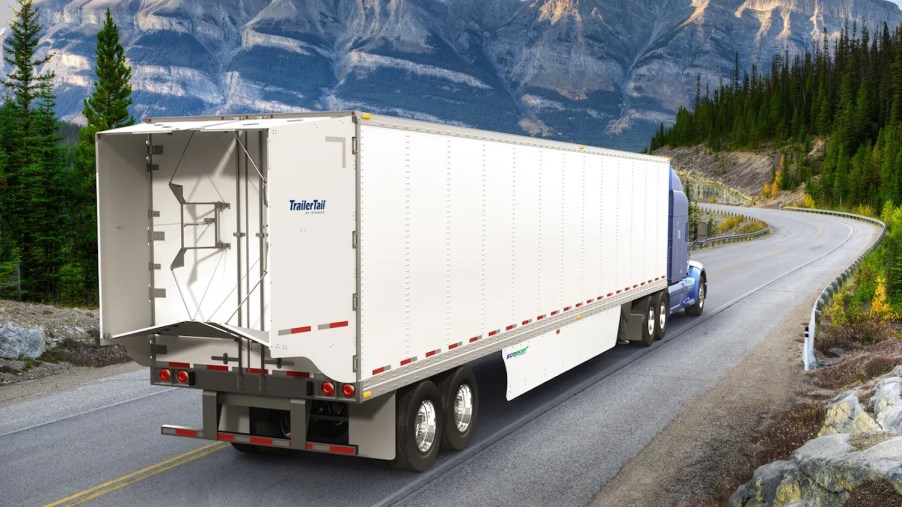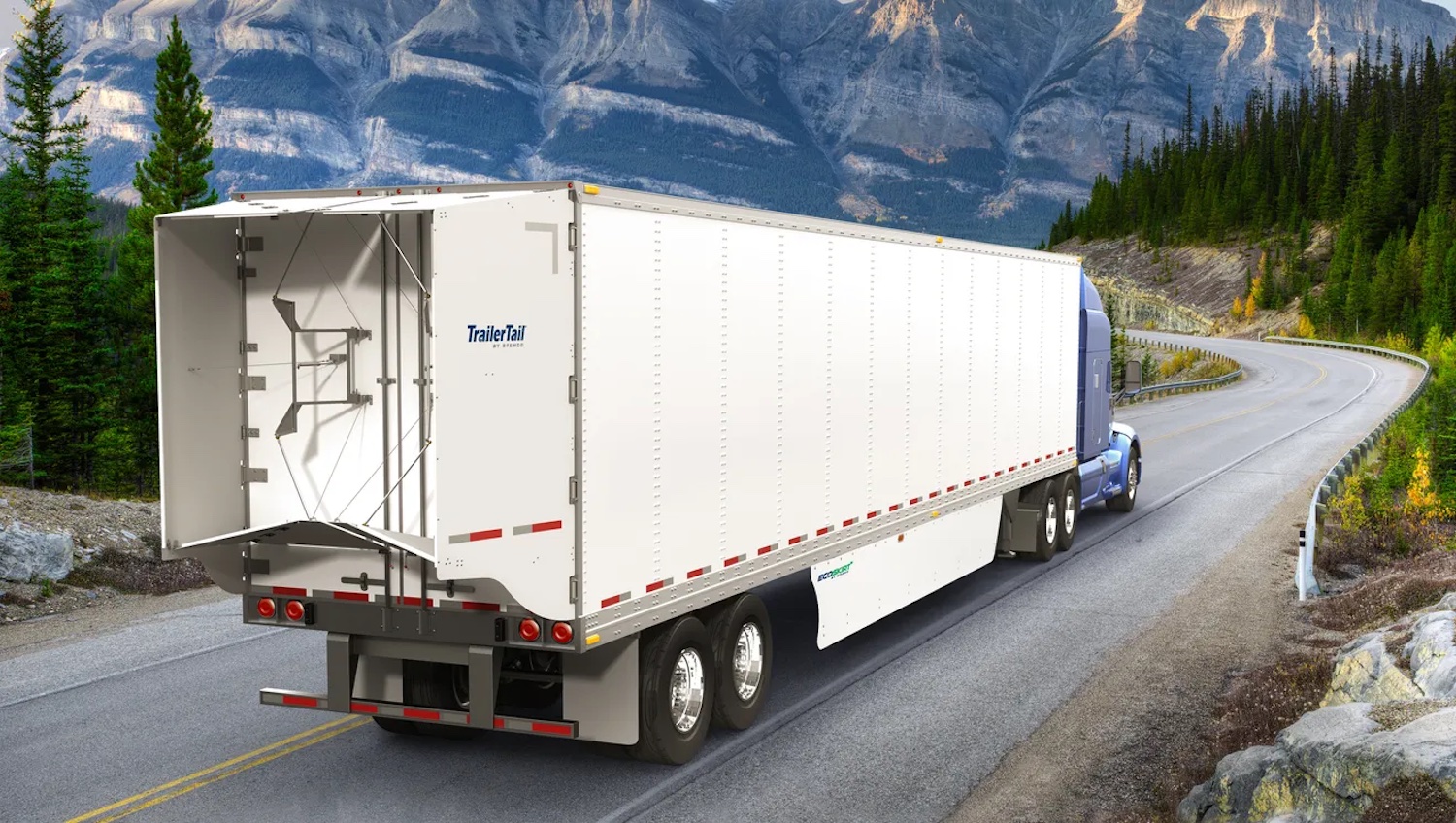
Why Do Some Semi Truck Trailers Have Fins?
Have you ever seen semi trucks driving down the road with large fins sticking off the back of their trailers? These may be TrailerTail brand aerodynamic accessories engineered to increase semi truck fuel efficiency. While the concept of a trailer tail has been around for decades, it surged in popularity over the last decade. TrailerTails are no longer in production, but increasing fuel prices may bring them back.
The problem with semi trucks

There’s a problem with semi trucks: their shape. A rectangular trailer is a very efficient shape to maximize cargo capacity. But it’s not an efficient shape to maximize fuel economy.
You may already know that a sleek vehicle with an angular front end will cut through the air and require less energy to move at high speeds. But did you know that the rear of a vehicle can be just as important for aerodynamics and fuel efficiency?
A vehicle with a non-aerodynamic rear leaves turbulence in its wake. The tumble of air sliding into the space behind a truck creates a vortex. This vortex actually translates to negative pressure, or a slight vacuum, tugging the truck backward.
The story of TrailerTails

According to the Commercial Carrier Journal trucking industry newsletter, aerodynamic trailer tails are nearly a century old. The first known tests with full-size trailer “boat tails” date back to the 1930s. By the 1960s, manufacturers began wind tunnel tests on similar aerodynamic elements.
In 2008, a company called ATDynamics launched a line of “TrailerTails” engineered to improve semi truck fuel efficiency. These fins hung off the rear doors of semi truck trailers. Drivers could swing them inward, latching them against the doors. But they could also hinge them out, pointing directly backward from the trailer.
Experts believe that TrailerTails, when installed alongside under-trailer skirts, can improve fuel economy by 9%. It’s no surprise that 50 large truck fleets ordered a combined 50,000 TrailerTails, Stemco purchased ATDynamics, and Peterbilt, Daimler, Volvo, and Navistar all released prototypes with their own versions of TrailerTails.
What is surprising is that TrailerTales sales ground to a halt. Stemco has even quit building them.
What happened to TrailerTails?

If you notice aerodynamic fins on a trailer, you are probably looking at a semi truck that was fit with them a few years ago. By 2020, Stemco halted all production of TrailerTails.
Many trucking enthusiasts wonder why TrailerTails went from being the next hot thing in trucking to a complete flop. There is no one clear answer. This shift was likely due to several factors.
Firstly, between 2008 and 2020, fuel prices did not climb as much as some people predicted. TrailerTails can cost $2,000 to order and install. Some semi truck owners may have expected a speedy return on their investment but didn’t see their investment pan out at all.
Secondly, TrailerTails were yet another thing for busy truck drivers to worry about. Even in their heyday, you could see many tractor trailers driving around with their TrailerTails folded up and useless. This would lead to an even slower return on truck owners’ investments.
Will rapidly climbing fuel prices translate to a resurgence of TrailerTails or a similar product? We’ll just have to wait to find out.
Next, read about whether you can fit more cold gasoline into your tank than warm gasoline or see TrailerTails explained in the video below:



